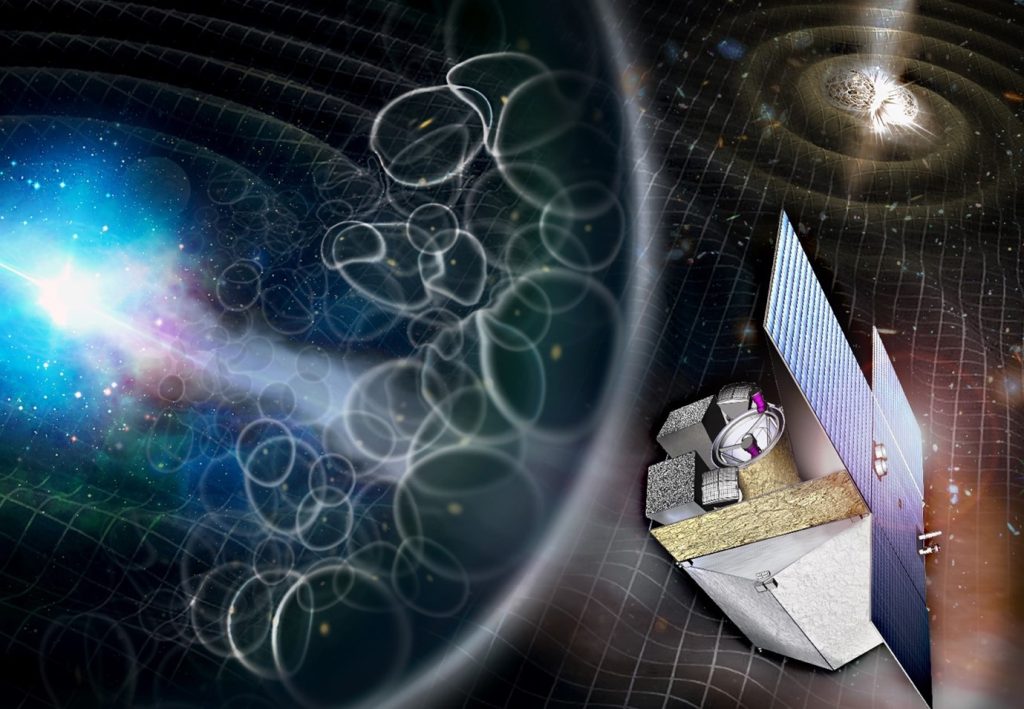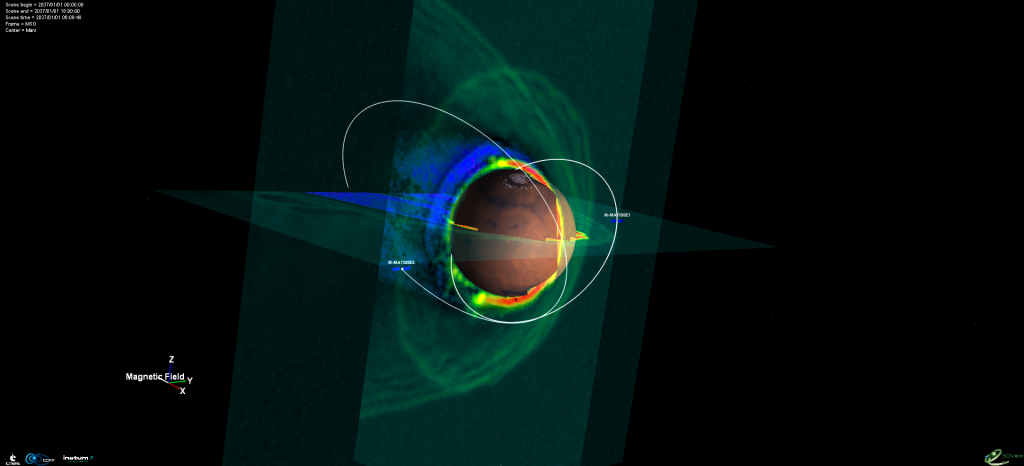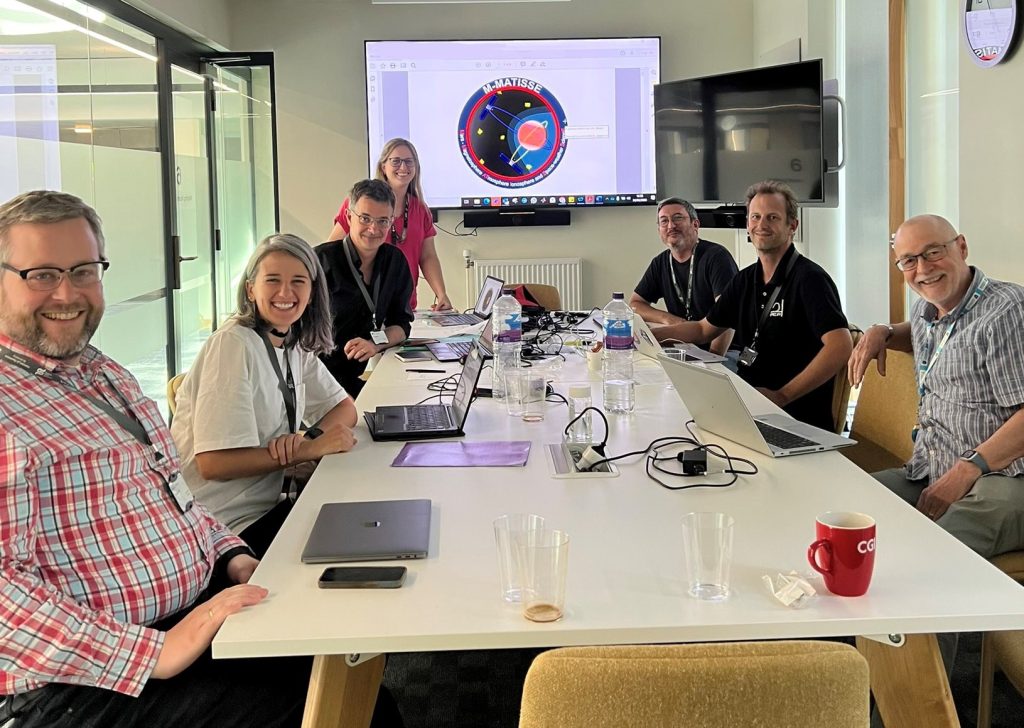Final stage reached for space missions powered by University of Leicester expertise

- European Space Agency announces missions that will undergo three-year study ahead of final selection
- University of Leicester-led M-MATISSE is designed to provide the first global characterisation of the dynamics of the Martian system from the surface until space, including new insights into space weather on Mars
- THESEUS will use a Leicester-led X-ray telescope to find gamma-ray bursts to explore the early universe
Two space missions that involve the University of Leicester are in the final stages of the selection process that will see one successful mission taken forward by ESA for launch
Utilising expertise, leadership and instrumentation from Leicester, these potential missions could offer us new insights into space weather on Mars and earliest developments in the Universe.
M-MATISSE and THESEUS are two of the three mission concepts selected by the European Space Agency in November 2023 for a 3-year Phase A study as candidates for the ESA M7 mission. Following Phase A, ESA will select one mission for a launch in 2037.
M7 is the seventh, medium-sized mission of the ESA long-term science programme under the Voyage 2050 plan. Previous M missions include EUCLID, launched earlier this year, and PLATO due for launch in 2026.
Mars Magnetosphere ATmosphere Ionosphere and Space-weather SciencE (M-MATISSE) aims to unravel the complex and dynamic couplings of the Martian magnetosphere, ionosphere and thermosphere with relation to the Solar Wind and the lower atmosphere. It will provide the first global characterisation of the dynamics of the Martian system at all altitudes, to understand how the atmosphere dissipates the incoming energy from the solar wind, including radiation, as well as how different surface processes are affected by Space Weather activity.

It will consist of two orbiters that will observe the plasma environment from the surface to space through coordinated simultaneous observations, named Henri and Marguerite in honour of the French artist Henri Matisse and his daughter. The University of Leicester are leading the overall mission as well as acting as Principal Investigators for its M-EPI instrument and the Science Data Centre for mission coordination, planning and science exploitation.
Dr Beatriz Sánchez–Cano, PI of the M-MATISSE mission, and PI of the M-EPI instrument said: “M-MATISSE is the product of a large organized and experienced international consortium led by the UK and supported by the UKSA and other European agencies, including Japanese and American partners It has the unique capability to track solar perturbations from the Solar Wind down to the surface, being the first mission fully dedicated to understand planetary space weather at Mars. It will revolutionize our understanding and ability to forecast potential global hazard situations at Mars, an essential precursor to any future robotic & human exploration, which perfectly aligns with the UK strategic interest in space weather forecasting and solar system exploration.”

The Transient High Energy Sky and Early Universe Surveyor (THESEUS) mission concept aims to fully exploit the unique and breakthrough potentialities of Gamma-Ray Bursts (GRBs) for investigating the Early Universe and substantially advancing Multi-Messenger Astrophysics. THESEUS will discover the most powerful explosive events in the Universe over the entirety of cosmic history and allow detailed tests of fundamental physics.
THESEUS will carry three instruments on a fast-response satellite, including the Soft X-ray Imager (SXI) which will be led from the UK by the University of Leicester. The SXI provides a revolutionary wide-field X-ray imaging capability, monitoring large areas of sky simultaneously looking for X-ray transients while performing a sky survey, and is based on technology developed for ESA’s BepiColombo mission to Mercury.
The SXI will be developed by a European consortium, including scientists from the UK, Germany, Spain, Belgium, Czech Republic and a wider international science team.
Professor Paul O’Brien, Principal Investigator for the SXI at the University of Leicester, said: “The capability of THESEUS will revolutionize time domain and multi-messenger astronomy, one of the fastest growing areas of astrophysics. The UK is a key part of the mission, providing a sensitive, wide-field X-ray telescope funded by UKSA in the UK and other European agencies.”
Dr. Caroline Harper, Head of Space Science at the UK Space Agency said: “It’s fantastic to see that two missions with leading roles for the University of Leicester are in the final stages of the selection process with the European Space Agency, demonstrating the excellent space science found in our academic community.
“M-Matisse and THESEUS could offer exciting new insights into space weather on Mars and the earliest developments in the Universe, and both have great potential to push the boundaries of human knowledge further.”


